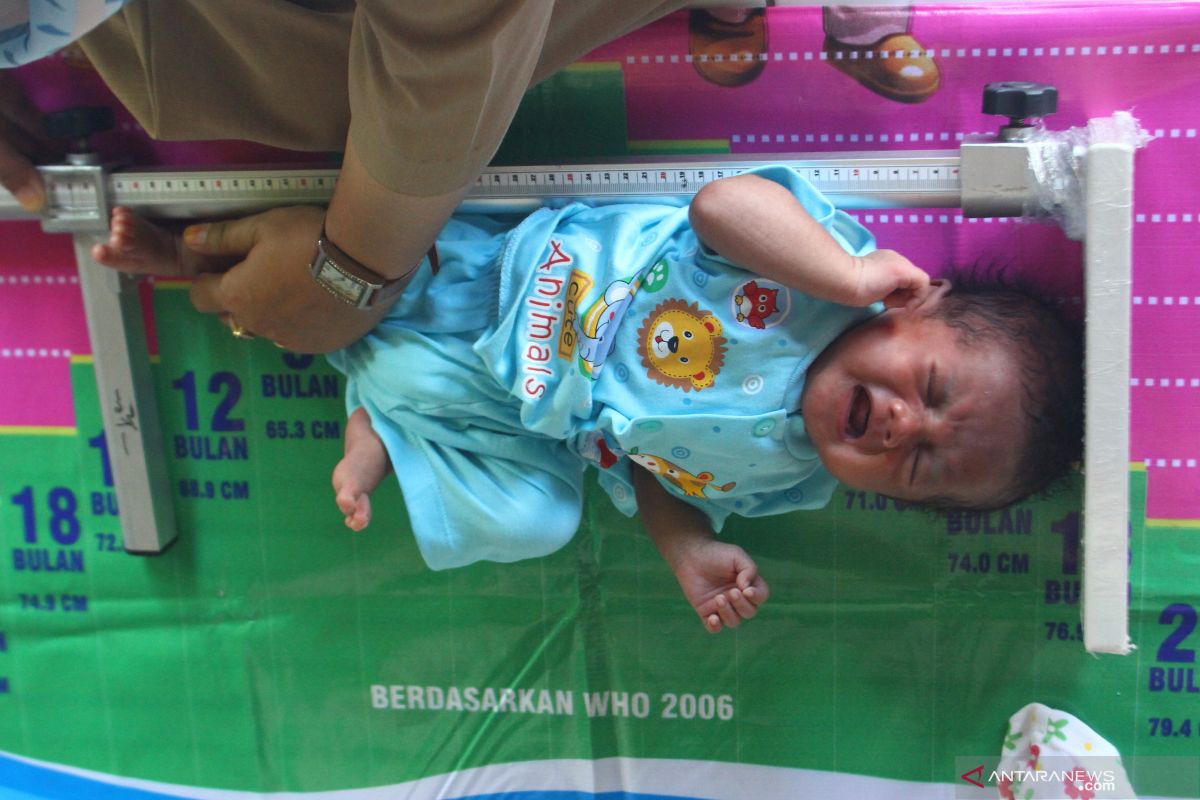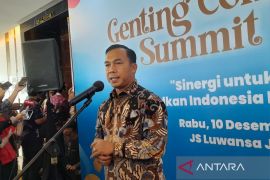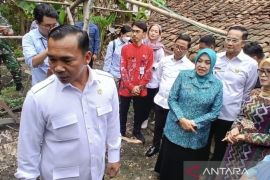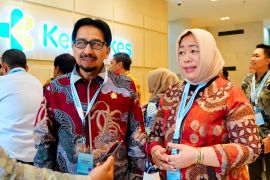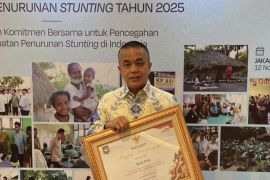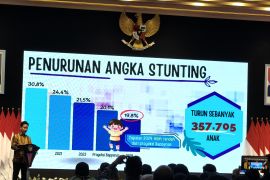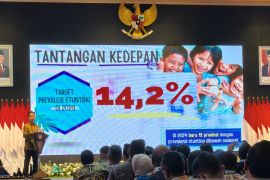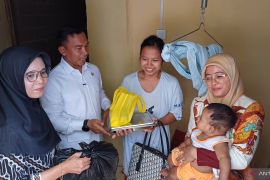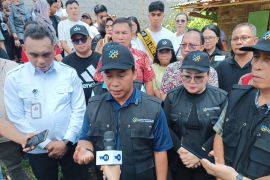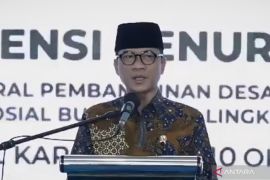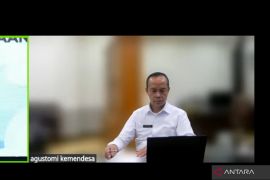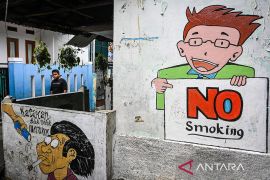The national stunting rate plunged to 27.6 percent, from 30.8 percent in 2018. However, the figure touched as high as 40 percent in certain areas. The government is keen to curtail it further to 14 percent and to reduce the poverty rate to 6.5 percent by 2024. The number of poor is expected to drop to between 18.34 million and 19.75 million.
The government has come up with a program to expedite stunting prevention in a convergent manner by conducting specific and sensitive interventions.
To this end, integrated teams, involving several relevant ministries and institutions, are being established to help children with stunting problem, particularly in 160 districts having recorded high stunting rate, across Indonesia.
Vice President Ma'ruf Amin, in his capacity as chairman of the Poverty Eradication Acceleration Team (TNP2K), held a discussion in Jakarta in early February 2020 with Home Affairs Minister Tito Karnavian regarding coordination for forming integrated teams.
Karnavian has been assigned the role of coordinator to foster and oversee local governments to help reduce the prevalence of stunting.
"There are 160 districts in red zones. They must be addressed by conducting integrated activities. The 160 districts might be segregated into 16 regions, with each region being handled by one team, thereby translating to the presence of 10 integrated teams," the minister expounded.
Related news: Government stresses on curbing stunting to improve work force quality
Related news: Government prioritizes efforts to curb stunting, poverty rates
As for the program to expedite stunting prevention, Health Minister Terawan Agus Putranto highlighted during the 2020 National Working Meeting on Health in Jakarta on Feb 19 that the Ministry of Health was tasked with specific interventions by conducting various health-related activities, while sensitive interventions concerning the availability of food, clean water, and sanitation; community empowerment; and improvement of care at the family and community level, as well as the welfare of the poor are the responsibility of other ministries.
The availability of food resources necessitates collaboration and program synergy involving the Ministry of Agriculture; Ministry of Villages, Development of Disadvantaged Regions, and Transmigration; and the Ministry of Home Affairs.
Community empowerment calls for cooperation and program synergy with the Ministry of Villages, Disadvantaged Regions and Transmigration, as well as the Ministry of Home Affairs.
The Ministry of Religion and the Ministry of Education and Culture are tasked with boosting care at the family and community level.
"Such collaboration is believed to be crucial owing to the specific interventions that are the responsibility of the Ministry of Health that only contributes 30 percent in handling the problem of stunting, while 70 percent are multisectoral contributions in the form of sensitive interventions," Putranto explained.
He urged regional governments to coordinate with local organizations to derive more optimal results of the program.
To reduce the burden of expenditure and improve access to health and education services for the poor, the Ministry of Social Affairs has allocated a budget of some Rp31.3 trillion under the Family Hope Program (PKH).
The PKH target was for underprivileged families that had a health component in the category of pregnant women and early childhood, Director General of Social Protection and Security Harry Hikmat stated during a hearing with the House of Representatives’ Commission VIII in Jakarta on Feb 10.
Based on data in 2020, the number of PKH recipients in the category of pregnant women reached 137 thousand, with a maximum of two pregnancies; early childhood, 3.15 million; school children, 12.71 million; 105 thousand with severe disabilities; and 1.03 million elderly.
To this end, the Ministry of Social Affairs also raised the index of assistance for pregnant women and young children as a contribution to the stunting reduction program.
"Technically, in the 2020 program, we focus on the impact of PKH to be able to contribute to reducing malnutrition and stunting. One of them is increasing the index for the assistance component for pregnant women and young children, from 2.4 million to three million," he explained.
Meanwhile, Coordinating Minister for Human Development and Cultural Affairs Muhadjir Effendy recently revealed that the government has given due emphasis to efforts to reduce stunting in Indonesia under its program to boost the quality of human capital.
The local health offices across all regions must ensure that the number of stunting cases declined in accordance with the primary mission of human resource development in Indonesia, he remarked.
Citing data of the World Bank, the minister revealed that 54 percent of the 136 million workforce in the country had suffered from stunting in their childhood.
Hence, Effendy reiterated that stunting reduction had become a crucial agenda for the government to create superior, qualified human capital in 2045.
Data constraint, however, posed an obstacle to the government in its endeavor to lowering poverty and stunting rates, according to Effendy.
The government will immediately update data on social assistance recipients, so that all programs implemented by the government can be on target.
In accordance with Presidential Regulation No. 39 of 2019, the government, through Bappenas and the Ministry of Social Affairs, will expedite the creation of the One Indonesia Data Program that will serve as a reference for all policy makers in implementing poverty eradication programs.
Such data is expected to facilitate implementation of the stunting rate and poverty eradication programs to be right on target and ensure that the results are measurable.
Related news: Ministry to coordinate on stunting, poverty eradication programs
Related news: Integrated teams to be set up to cut stunting rate in 160 districts
Editor: Sri Haryati
Copyright © ANTARA 2020
